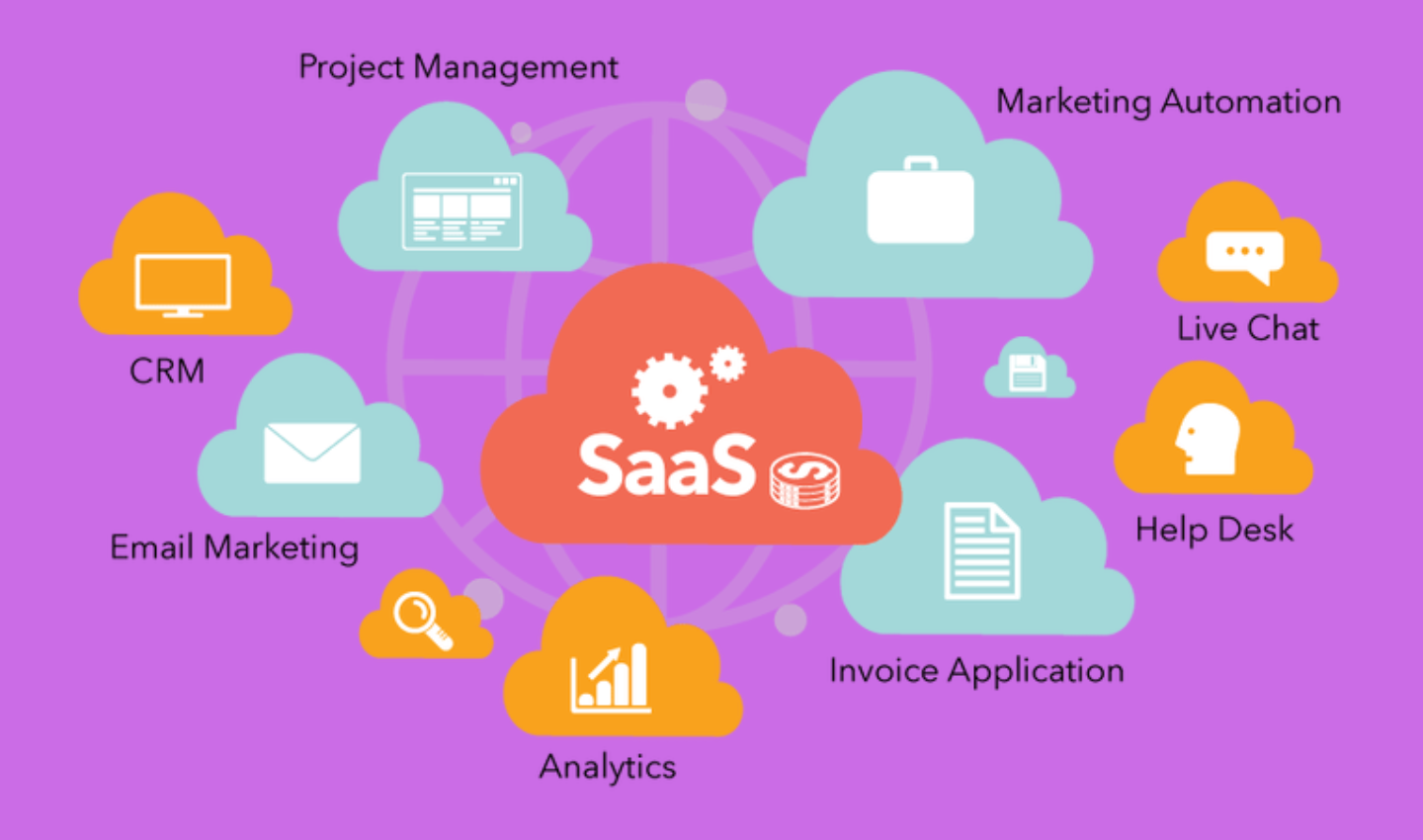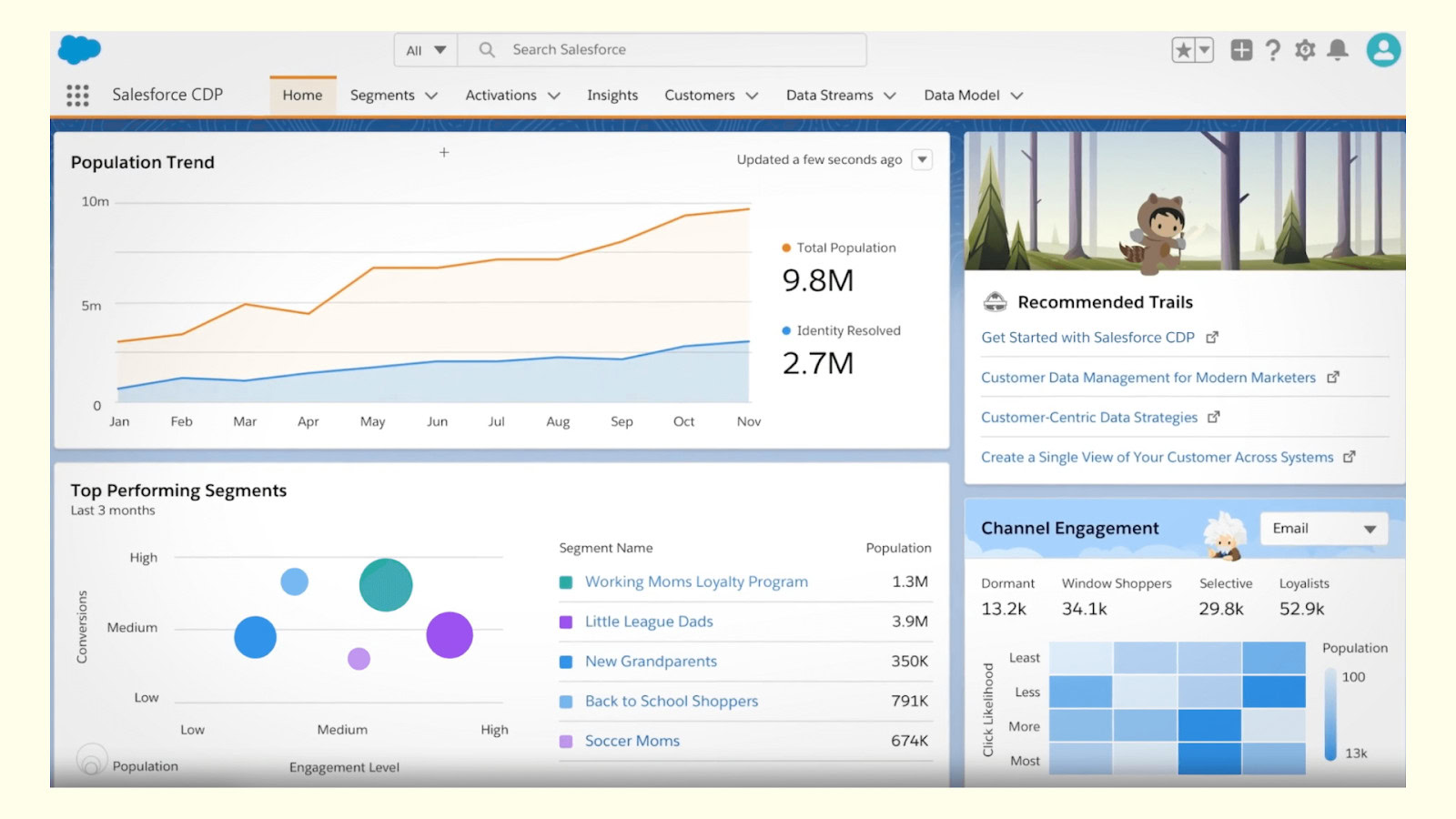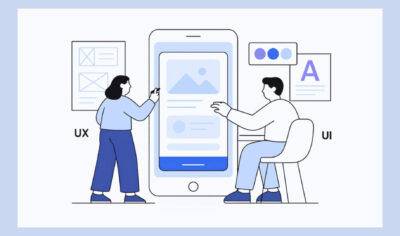
Stay ahead in SaaS: How to out UX your competitors
In today’s fiercely competitive SaaS market, understanding customer intent is more than just a strategy—it’s a necessity. With countless options available to users, the ability to comprehend and respond to what customers truly want can be the defining factor between success and failure.
Customer intent refers to the purpose or goal behind a user’s interactions with a service or product. For SaaS companies, grasping this intent is crucial for tailoring experiences, enhancing satisfaction, and driving business growth. This blog will delve into what customer intent is, why it’s essential, and how SaaS companies can effectively leverage it.
Table of Contents
1. Defining Customer Intent

Customer intent refers to the underlying purpose or goal behind a customer’s interactions with a product or service. Understanding customer intent involves recognizing what users aim to achieve during their engagement. There are three primary types of customer intent:
Transactional Intent
This occurs when a customer is ready to make a purchase or complete a specific transaction. For instance, a user subscribing to a SaaS service after a free trial or upgrading to a premium plan demonstrates transactional intent.
Informational Intent
This type of intent is characterized by customers seeking information or knowledge. They may be researching features, comparing different SaaS products, or looking for tutorials on how to use the service more effectively.
Navigational Intent
Customers with navigational intent are trying to find a specific page or resource within a website or platform. For example, a user might be looking for the login page, a particular help article, or a specific feature within the SaaS product.
Relevance to SaaS:
Understanding these different types of customer intent is crucial for SaaS companies because it allows them to tailor their strategies and offerings to better meet customer needs.
Improved User Experience
By recognizing and responding to transactional intent, SaaS companies can streamline the purchasing process, making it easier for users to subscribe or upgrade. For informational intent, providing comprehensive and easily accessible resources, such as FAQs, guides, and comparison charts, can enhance the user experience. Addressing navigational intent by ensuring intuitive navigation and clear pathways to important resources helps users find what they need quickly, reducing frustration and increasing satisfaction.

Targeted Marketing and Sales
Understanding customer intent allows SaaS companies to craft more targeted marketing messages and sales pitches. For instance, marketing efforts can focus on highlighting key features and benefits for users with transactional intent, while content marketing can provide valuable insights and tutorials for those with informational intent.
Product Development and Feature Enhancement
Insights into customer intent can guide product development by revealing which features or improvements are most desired by users. For example, if many users with informational intent are frequently seeking help on a particular feature, this could indicate a need for better documentation or a more user-friendly design.

Customer Retention and Loyalty
When SaaS companies effectively address the various intents of their customers, it leads to higher satisfaction and retention rates. Users are more likely to remain loyal to a service that consistently meets their needs and anticipates their goals.
2. Importance of Understanding Customer Intent
Customer Retention:
Understanding customer intent is crucial for retaining customers. When SaaS companies know what their customers aim to achieve, they can proactively address their needs and pain points. For instance, if a company identifies that users with transactional intent frequently experience difficulties during the checkout process, they can streamline this process to improve satisfaction and reduce churn.
A project management SaaS platform might notice that users are struggling to upgrade to premium plans due to a complicated payment process. By simplifying the payment interface and providing clear instructions, the company can enhance user experience, leading to higher retention rates.
Personalization:
Intent data allows SaaS companies to personalize user experiences, which significantly improves user satisfaction. By tailoring content, recommendations, and interactions based on individual user intent, companies can make their platforms more relevant and engaging.
A SaaS company providing online learning tools might use intent data to recommend courses based on a user’s previous searches and course enrollments. If a user shows informational intent by frequently searching for coding tutorials, the platform can suggest relevant coding courses and resources.

Product Development:
Customer intent insights are invaluable for guiding product development and feature enhancements. By understanding what users need and want, SaaS companies can prioritize the development of features that will have the most significant impact.
A customer relationship management (CRM) SaaS provider might notice that many users with informational intent are looking for advanced reporting features. The company can then prioritize the development of these features to meet customer demand and stay competitive.
Marketing and Sales:
Understanding customer intent can refine marketing strategies and sales pitches, making them more effective. By aligning marketing messages with the specific intents of different user segments, companies can increase engagement and conversion rates.
A SaaS company offering accounting software might use intent data to create targeted marketing campaigns. For users with transactional intent, the campaign could highlight limited-time discounts and easy onboarding processes. For those with informational intent, the company could offer detailed guides and webinars on effective accounting practices.
3. Methods to Identify Customer Intent

Data Analysis:
Data analytics involves collecting and analyzing data from various sources to uncover patterns and insights related to customer behavior and intent. This method allows SaaS companies to make informed decisions based on empirical evidence.
User Behavior Tracking:
Tracking user behavior involves monitoring and analyzing how users interact with a SaaS platform. This method provides real-time insights into customer actions and preferences.
Tools and Techniques:
- Heatmaps: Tools like Hotjar create visual representations of where users click, scroll, and hover on a webpage, highlighting areas of interest and intent.
- Session Recordings: Capturing and replaying user sessions helps identify friction points and understand user behavior.
- Click Tracking: Monitoring which elements users click on can reveal their intentions and interests.

Feedback and Surveys:
Direct feedback from customers through surveys and feedback forms provides qualitative data that complements quantitative analytics. This method captures customer thoughts, opinions, and intentions directly.
Role of Feedback and Surveys:
- Customer Satisfaction Surveys: Asking users about their satisfaction with the platform and specific features can reveal areas for improvement and indicate intent.
- Net Promoter Score (NPS): Measuring how likely customers are to recommend the platform to others helps gauge overall satisfaction and loyalty.
- In-App Surveys: Short, targeted surveys within the app can gather real-time feedback on specific features or experiences.
Usage Patterns:
Analyzing how users interact with a platform over time provides valuable insights into their needs and intents. This method involves examining patterns and trends in user behavior.
Usage Patterns:
- Feature Utilization: Tracking which features are most and least used can reveal user preferences and areas for improvement.
- Session Frequency: Analyzing how often users log in and engage with the platform can indicate their level of interest and commitment.
- Task Completion Rates: Monitoring how successfully users complete tasks can identify potential obstacles and areas for enhancement.
Machine Learning and AI:
Advanced technologies like machine learning and AI can analyze large datasets to predict and understand customer intent with greater accuracy and efficiency.
Role of Machine Learning and AI:
- Predictive Analytics: Machine learning algorithms can analyze historical data to predict future user behavior and intent.
- Personalized Recommendations: AI can provide personalized content and feature recommendations based on individual user behavior and preferences.
- Sentiment Analysis: AI-driven sentiment analysis tools can evaluate customer feedback and social media interactions to gauge overall sentiment and intent.
4. Case Studies and Examples
Understanding and leveraging customer intent has been a cornerstone for success in many leading SaaS companies. Let’s explore a few examples to illustrate how this approach can drive substantial business outcomes.

Salesforce:
Salesforce, a global leader in customer relationship management (CRM) software, has effectively utilized customer intent data to shape its product and marketing strategies.
Leveraging Customer Intent:
- Transactional Intent: Salesforce noticed a significant portion of users were interested in integrating their existing tools with the CRM system. By understanding this intent, Salesforce expanded its integrations with other popular business tools, simplifying the onboarding process and enhancing user experience.
- Informational Intent: Salesforce provides extensive resources, such as webinars, tutorials, and case studies, to address the informational needs of potential customers. This content not only educates users but also guides them through the decision-making process.
Impact on Business Metrics:
- Increased Customer Retention: By addressing user needs and simplifying integrations, Salesforce saw a notable increase in customer retention rates. Customers were more likely to continue using a platform that seamlessly integrated with their existing tools.
- Higher Conversion Rates: Educational content tailored to informational intent improved conversion rates as users felt more informed and confident in their purchasing decisions.
Slack:

Slack, a popular team collaboration tool, has also excelled in understanding and responding to customer intent, resulting in widespread adoption and growth.
Leveraging Customer Intent:
- Transactional Intent: Slack observed that many users were seeking a streamlined communication tool that could replace email for internal communications. By emphasizing its real-time messaging and integration capabilities in its marketing campaigns, Slack effectively captured this transactional intent.
- Navigational Intent: Slack made its platform highly intuitive, with easy access to different channels, direct messages, and integrations. This design catered to users with navigational intent, making it easier for them to find and use the features they needed.
Impact on Business Metrics:
- Rapid User Growth: By addressing the core needs of its target audience, Slack achieved rapid user growth, surpassing millions of daily active users within a few years.
- High User Engagement: Slack’s focus on ease of use and effective communication tools led to high user engagement, with users spending a significant amount of time on the platform daily.
Impact on Business Metrics:
The success of SaaS companies like Salesforce and Slack highlights the tangible impact of understanding and leveraging customer intent. Let’s delve into specific metrics and results from these case studies:
Salesforce Metrics:
- Customer Retention Rate: Salesforce saw an increase in customer retention by 10% after enhancing integration capabilities based on user feedback and intent data.
- Lead Conversion Rate: Informational content efforts led to a 15% higher lead conversion rate as potential customers were better informed and more likely to commit to a purchase.
Slack Metrics:
- Daily Active Users (DAU): Slack’s user base grew exponentially, with DAUs increasing from 500,000 to over 10 million within a few years, driven by its targeted marketing and user-friendly design.
- Average Session Duration: Slack users exhibited high engagement, with the average session duration exceeding 90 minutes per day, indicating deep user involvement and reliance on the platform.
Implementing Customer Intent Strategies
Implementing strategies to understand and leverage customer intent involves a systematic approach. Here is a step-by-step guide for SaaS companies to get started:
Step 1: Define Objectives
- Identify Goals: Clearly define what you aim to achieve by understanding customer intent. This could include improving customer retention, enhancing user experience, or increasing conversions.
- Align Objectives with Business Strategy: Ensure that your goals are aligned with your overall business strategy and customer satisfaction objectives.
Step 2: Gather Data
- Collect Quantitative Data: Use analytics tools to gather data on user interactions, website traffic, and in-app behavior.
- Collect Qualitative Data: Conduct surveys, interviews, and gather feedback to understand customer opinions and motivations.
Step 3: Analyze Data
- Segmentation: Segment users based on their behavior, preferences, and intents. This helps in tailoring strategies for different user groups.
- Pattern Recognition: Use data analysis tools to identify patterns and trends in user behavior that indicate intent.
Step 4: Develop Strategies
- Personalize Experiences: Use the insights gained to create personalized user experiences that cater to different intents.
- Optimize Features: Prioritize feature development and enhancements based on user needs and intents.
Step 5: Implement Changes
- Deploy Solutions: Implement the strategies and solutions developed in the previous step.
- Monitor Impact: Continuously monitor the impact of these changes on user behavior and business metrics.
Step 6: Iterate and Improve
- Gather Feedback: Continuously collect feedback from users to understand the effectiveness of implemented changes.
- Refine Strategies: Use the feedback and data to refine and improve your strategies, ensuring they remain relevant and effective.
Tools and Technologies:
To effectively gather and analyze customer intent data, SaaS companies can leverage a variety of tools and technologies. Here are some recommendations:
- Google Analytics: For tracking website traffic, user behavior, and conversion rates.
- Hotjar: For heatmaps, session recordings, and user feedback.
- Mixpanel: For advanced user analytics and behavioral data tracking.
- SurveyMonkey: For creating and analyzing customer surveys and feedback forms.
- HubSpot: For CRM and inbound marketing, providing insights into customer interactions and behavior.
- Intercom: For real-time customer communication and feedback collection.
- Amplitude: For product analytics and understanding user behavior across digital products.
- Pendo: For in-app user guidance and feedback, helping to understand user intent and improve experience.
- Tableau: For data visualization and analysis, making it easier to interpret complex data sets and identify trends.
6. Challenges and Solutions
Understanding customer intent is crucial but comes with several challenges that SaaS companies must navigate. Here are some common obstacles:
Data Overload:
With the vast amounts of data available, it can be challenging to sift through and identify the most relevant insights. Companies might struggle with focusing on key metrics that genuinely indicate customer intent.
Changing Customer Needs:
Customer intents can evolve rapidly due to market trends, new technologies, or shifts in user behavior. Keeping up with these changes requires constant monitoring and agility.
Integration Issues:
Integrating data from various sources (e.g., web analytics, CRM, customer feedback) can be complex and time-consuming. Disparate data systems can lead to fragmented insights and hinder a comprehensive understanding of customer intent.
Limited Resources:
Smaller SaaS companies may lack the resources (time, budget, personnel) to invest in sophisticated tools and technologies for analyzing customer intent. This limitation can impede their ability to gather deep insights.
Privacy Concerns:
Collecting and analyzing customer data comes with privacy and ethical considerations. Ensuring compliance with data protection regulations (like GDPR) while still gaining valuable insights is a delicate balance.
Solutions and Tips:
To overcome these challenges, SaaS companies can employ several practical solutions and tips:
Prioritize Key Metrics:
Focus on key metrics that provide the most actionable insights. For example, prioritize conversion rates, customer churn rates, and engagement metrics to gauge customer intent effectively. Use data visualization tools like Tableau to help identify and focus on these critical metrics.
Stay Agile and Adaptable:
Implement agile methodologies to quickly adapt to changing customer needs. Regularly review and update your strategies based on the latest data and feedback. For instance, hold quarterly reviews to assess and adjust your understanding of customer intent.
Invest in Integration Tools:
Use data integration tools like Zapier or Segment to consolidate data from various sources. These tools can help streamline data collection and provide a unified view of customer behavior and intent.
Leverage Affordable Tools:
For smaller companies, use cost-effective tools and technologies to gather and analyze data. Tools like Google Analytics and SurveyMonkey offer powerful features at a lower cost. Open-source tools like Matomo can also be an excellent alternative for web analytics.
Ensure Data Privacy Compliance:
Develop and adhere to a strict data privacy policy to ensure compliance with regulations. Use anonymized data where possible and obtain explicit consent from users before collecting their data. Regularly audit your data practices to maintain compliance and build customer trust.
Build a Cross-Functional Team:
Create a cross-functional team that includes members from marketing, product development, and customer support. This team can collaborate to share insights, align strategies, and ensure a holistic approach to understanding and responding to customer intent.
Provide Regular Training:
Invest in regular training for your team on the latest tools and techniques for analyzing customer intent. This will help your team stay updated and effectively leverage new technologies and methodologies.
Conclusion
Understanding customer intent is a powerful strategy for SaaS companies looking to enhance user satisfaction, improve retention, and drive growth. By defining customer intent, recognizing its importance, employing various methods to identify it, learning from successful examples, and implementing effective strategies, SaaS companies can significantly impact their business outcomes. While challenges exist, practical solutions and a customer-centric approach can help overcome these obstacles and harness the full potential of customer intent insights.
Take your company to the next level and get results with our world class user experience, interface design and implementation.
Get a FREE 30 min Strategy Session

Related posts
Designing with Integrity: The Ethical Designer’s Handbook on Dark Patterns
In the digital age, where user experience reigns supreme, the design landscape is constantly evolving. However, amidst the pursuit of […]
Apple’s ‘Exhausted’ Emoji: The Symbol We Didn’t Know We Needed
Have you seen it yet? That yellow face with the heavy under-eye bags that just gets you? Apple recently dropped […]
Reducing Churn with Good Customer Cancellation
Onboarding customers is of course important, but let’s not forget about the crucial concept of offboarding. Katryna Balboni, Senior Content […]
Creative product design that gets results
Take your company to the next level with world class user experience and interface design.
get a free strategy session



